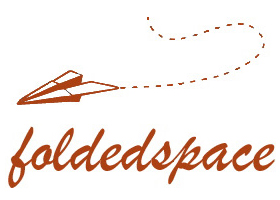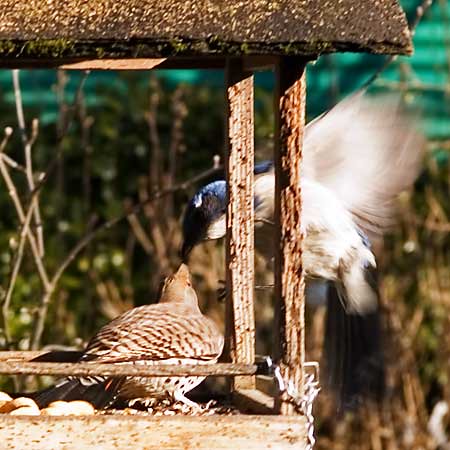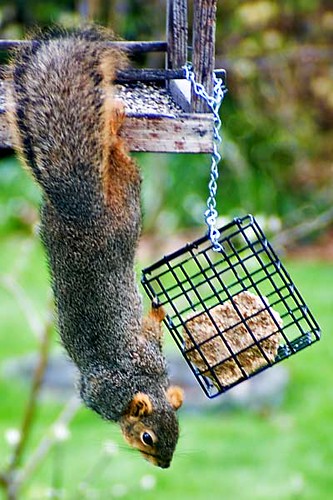If there’s one area of our household budget where frugality goes out the window, it’s the birds.
There’s a large picture window over our kitchen sink, and I love to spend my Saturday mornings standing with a cup of tea, watching our neighborhood avian community. Or I keep an eye on the flight activity while I do the large-batch cooking that will see us through the week.
Even a simple (and seemingly free) hobby like this can be costly. Other than growing your own seeds crops, there aren’t many ways to save money on birdfood. There are websites where you can order birdseed, but the shipping costs will kill you. You can buy seed in huge quantities for bulk discounts, but you’ll need a place to store it. Also, I’ve had problems with moth larvae in my seeds during long-term storage. I’ve just resigned to spend the money, since I enjoy the birds enough to make it worthwhile to me.
Yesterday I spent $50 on bird food:
- Twenty pounds of thistle seed for the finches
- Forty pounds of wild birdseed
- Twenty pounds of black oil sunflower seeds
This will last for about two months, but I also supplement with bags of unsalted in-the-shell peanuts (for the jays), and with suet & seed blocks.
Because J.D. recently purchased eight loaves of bread for a blog post he never wrote, I decided to use some of the leftovers to make my own suet cakes. I did some internet research and found a variety of recipes for do-it-yourself suet. Some of these recipes called for rendering your own lard, but I didn’t feel quite that dedicated. Instead, I chose a formula containing pre-packaged lard, plenty of breadcrumbs, and peanut butter. It was simple to make, and the birds love it.
This type of suet cake typically hangs in a wire cage. Birds that feed on it are clinging feeders. In our neighborhood, these cakes attract flickers and downy woodpeckers, bushtit flocks, nuthatches, finches, and (of course) the occasional starling. Sometimes even a naughty squirrel finds his way to the suet:
Here’s the recipe I used (with a price breakdown):
Home-Made Suet Block
- 1 pound lard ($1.49)
- 3/4 cup peanut butter (40 cents — wait for a sale to stock up on a cheap variety)
- 1/2 cup flour (7 cents)
- 1/2 cup cornmeal (30 cents)
- 1 cup sugar (25 cents)
- approximately half a loaf’s worth of bread crumbs (variable, but no more than $2.00 — free if your husband is a blogger)
- 1-1/2 cups of mixed seeds, nuts and/or chopped dried fruits (12 cents for seeds only)
Melt the lard and peanut butter over low heat. Mix flour, cornmeal, and sugar and stir in. Add enough bread crumbs to absorb all liquid. Add fruit, seeds, and nuts as desired. Pour into a 9 x 5″ bread pan (lined with plastic wrap), or pour into suet cake molds. (I used molds I had saved from store-bought suet.) Allow to cool completely. Makes about 4 cakes. Keep refrigerated or in a cool place like a basement.
Total cost for four cakes: $4.63, so about $1.20 per cake.
One batch makes a bit more than four cakes of typical size. The cost savings of home-made suet blocks is minimal — at our local hardware store, they typically cost $1.49 each. But this was a great way to use our extra bread, effectively reducing the cost to $0.70 per cake. I processed all the spare loaves into crumbs and stuck them in the freezer to make more of these in the months to come. (This fall I’ll mix in some chopped windfall apples.)
This would make a fun family project that can be customized with whatever you have handy — cereal, dried fruits, stale bread, etc.



Zowie! Talk about great minds in the same path: I was just about to blog on the same subject. So, cutting to the hard part…has anyone figured how to make a thistle feeder (as opposed to a block)?
Thistle feeders attract flocks of goldfinches — when my friend puts hers out, her tree in front looks like it’s covered with golden flowers. I spotted a thistle feeder at a local nursery: gasp! FIFTY-TWO BUCKS!
It’s just a cylinder of a fairly wide metal mesh, capped on the top & bottom with metal “cap” things connected with a metal rod. The mesh is not as fine as the old-fashioned metal screen-door cloth stuff–it may be a little finer than the wire cage in the photo, but it looks sort of like that. Anybody know what that stuff is called and how to get it?
I suspect you could use food jar lids to make the bottom & top. You could probably use a dowel or a length of metal clothes-hanger wire to make the rod to hold it together. Or maybe a ridiculously long machine bolt?
Millet, which is the bulk of most birdseed, is extremely easy to grow, BTW. It will grow in pure sand. When I was a little girl, my mother used to blow the chaff off our budgie’s birdseed in the direction of our sandbox. A bunch of uneaten seed got blown into the sand, and as soon as it rained, we had a crop of the stuff.
Birds love fresh ripe millet — all you have to do is clip it and stick in the cage — or presumably, leave it where wild birds can get at it.
Thanks for the guest post, Kris! That is a wonderful squirrel picture. It led me to J.D.’s Flickr stream, which happens to have a slew of charming magazine ads from decades ago.
I am quite curious about the scrapped blog post that required eight loaves of bread!
Many people save cooking grease (e.g., from bacon) in a can in their freezer until it’s full, then throw it away. There may be a chance that one or more of your neighbors have been doing this; you might be able to trade for or simply take these cans once they’re full. Then use them for the next fat cakes!
@#1 Funny About Money: I have seen those expensive thistle feeders, but another option works for me: I have one of the “sock” feeders. It’s basically a fabric sleeve with a drawstring neck. I fill it with thistle seeds and suspend it from a branch. The finches love it. It costs about $6 and will eventually rot (~2 years) but I bet you could rig up something ingenious with an actual threadbare or loosely woven sock or stocking.
I had no idea birds would eat that much! Obviously not a birder, but that is a lot of food…or is it just one big yellow bird 🙂
Do you feed them year round?
I’ve heard that it’s best not to feed them at certain times – but I have forgotten when that time is! Also, we leave bits of string and old strips of cloth on top of the clothesline posts – for birds to use when building their nests.
NCN
a bit off topic but…
eight loaves of bread? What was the post going to be about?
I am with Four Pillars on this one, I am really curious about this.
Feeding the birds is like watching a free movie – the birds get the popcorn – so to speak! I have never regretted the money I spent on either seeds or feeders.
http://www.birdwatchersgeneralstore.com/articles.htm is a very entertaining source of bird stories and how-tos about feeding them. There is not much funnier than a bluejay as his crest is growing in! Thanks for the recipe. I think I will make some!
you can grow those oily sunflowers for free. just let the seeds fall to the ground .
This is another good peanut butter suet recipe. I made a big batch a couple weeks ago and the kinglets, wrens, and a variety of woodpeckers love the stuff.
I’ve seen metal thistle feeders at places like Wild Birds Unlimited for about $20. I have one hanging at my window that seems to always have a couple goldfinches hanging onto it.
My moms boyfriend has a few bird feeders. No matter what he does the squirrels get into them. Then end result is my mom has the fattest squirrels I have ever seen running around her yard.
NCN,
The rationale behind not feeding at certain times of the year is NOT sound. “They” (whoever they are) sometimes say that feeding birds during the winter months interferes with food-hunting instincts and will eventually be harmful in the end. WRONG!!!
Birds need reliable sources of food year round -in the cold months because food is scarcer and in the warm months when they are nesting and breeding. Hope this helps!
Kim,
That makes sense. Thanks!
NCN
When I looked around I found a local bird store that provided a free seed storage service. Now once a year (when they have a sale) I go in buy a years worth at a time.
For another cheap bird project try finding a bird house plan online, there are plenty out there. I used up some scrap wood and will hopefully attract more regulars to my yard.
We have a German shepherd and two daughters with long hair, so when we brush out hair during nesting season, I always leave it for the birds. I’ve seen nests in the fall, after the leaves are gone, that included really long blonde hair and were lined with fluffy German shepherd undercoat (like polyester fill). Those baby birds must have been cozy when they lived there.
I’ve also seen (through the binoculars) big (really big) squirrel nests that contain other items–nylons, parts of stuffed animals etc.
You are wonderful! Thanks for taking such good care of the animals. The good karma alone is worth the $ you are spending 🙂
My parents once made their own suet cakes by rendering store bought suet (the natural, stringy kind), adding birdseed and then chilling to harden. It made a neat treat for the birds, and they were able to mold it to a perfect fit for their suet feeder, but the house smelled for days. I recommend that if you want to boil your fat, you should do it on a nice warm day outdoors.
Living in Arizona suet blocks tend to soften easily. Any tips to make them more practical here? Even winter can be in the 80’s some days.